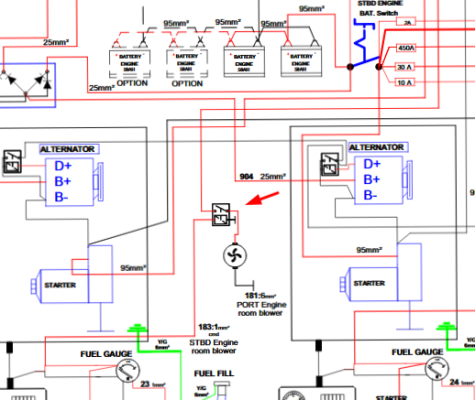+1 on the tone tracer. I had to use that to track down where they'd put a fuse for the anchor windlass. It was only by accident that I finally found it. We just couldn't determine where it went after it went behind the generator. I happened to have my (very sweaty) hand on the exterior of the metal box that had some other switches on it. I happened to press the probe button in my other hand... and heard the deedle-deedle-deedle of the probe! Turned out they'd buried a fuse BEHIND the panel.
I've used the probe for countless other circuit traces in the past (houses, AC, speaker, networks, etc) but this was, hands-down, the most satisfying result.
Looking at that circuit it appears they're tripping the relay with the same positive that powers the fuel gauges? Is the associated fuel gauge display for that side's blower also powering up?
And let's not forget to ask the obvious question, has there been any other work done anywhere else on the boat (that may or may not have involved wiring)?

